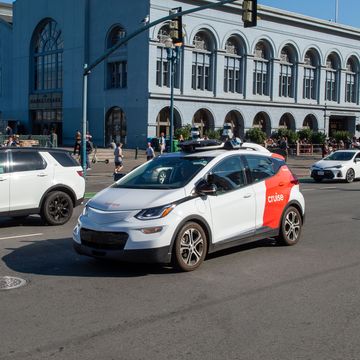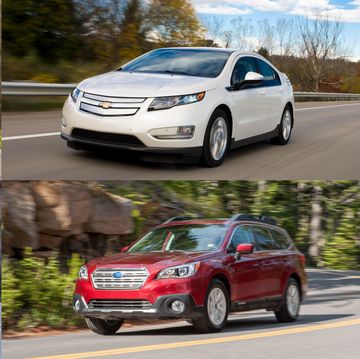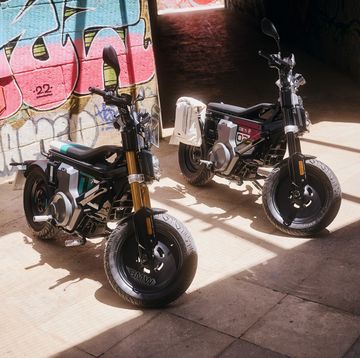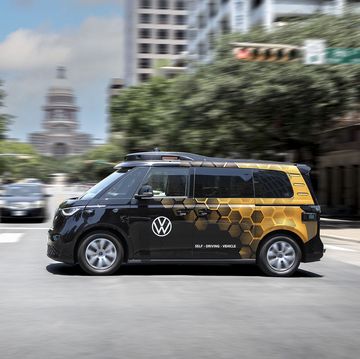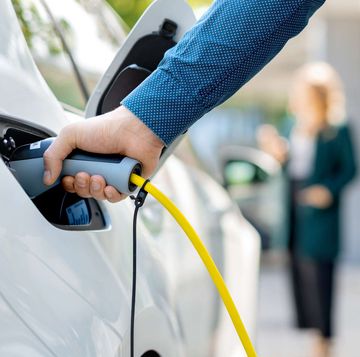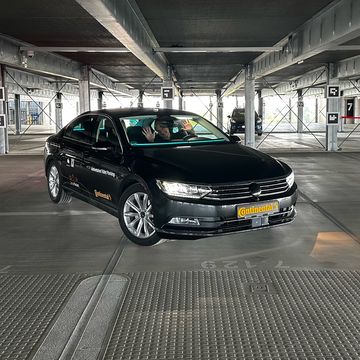- Roadway safety involves pedestrians and cyclists just as much as other drivers, and the current crop of SUVs are causing more cyclist injuries, according to the IIHS.
- Vehicle-involved bicycle crashes with SUVs resulted in 55% more trauma than crashes with cars, and fatal bicycle accidents have risen 33% since 2010.
- Poor front-end design is largely to blame and the IIHS says some pedestrian/cyclist-friendly redesigns could make a big difference.
Cyclists and drivers are often pitted against each other. Family trips to the grocery store are interrupted by a group of spandex wannabe racers forming a lane-hogging peloton, while two-wheeled city commuters are subjected to opening doors and bike-lane blocking delivery trucks. Both groups are instructed to share the road with each other, but the road itself is usually designed for the free and fast travel of automobiles, with only slivers of paint-designated space left for cyclists.
Unsurprisingly, this results in over 100,000 bicycle crashes per year, according to the National Highway Traffic Safety Administration. Worse, 932 cyclists died in accidents involving cars in 2020, with the majority of these fatalities involving a pickup truck, van, or SUV. This trend concerned the Insurance Institute for Highway Safety so much that it decided to research the correlation between cyclist deaths and larger vehicles, with findings in a research paper released this week.
Previous IIHS research has shown that SUVs are more fatal to pedestrians, but the institute wanted to analyze if SUVs are truly more dangerous to cyclists. And the answer wasn't hard to find, as a 2022 Illinois study found taller vehicles were involved in 26% of all pedestrian and bicyclist crashes, but 44% of fatal crashes. Compared to smaller passenger cars, which accounted for 62% of pedestrian and cyclist crashes but only 38% of fatalities, the trend is clear and the reason behind it is fairly obvious.
"The overrepresentation of certain vehicles in bicyclist fatalities is likely due to the way that their front-end height interacts with the person they strike," Samuel S. Monfort and Becky C. Mueller write in the IIHS report. "Our earlier research on pedestrian crashes found that SUVs were more hazardous than shorter, smaller cars at least partially because of their higher leading edges."
But what physical effect does this have on bicyclists who are hit by SUVs and pickup trucks? This was the goal of the IIHS study, as identifying certain injury patterns could influence future design and help limit fatalities in the future.
To do this, the institute compiled bicycle crash data from the Vulnerable Road User Injury Prevention Alliance, with incidents ranging from 2015 to 2021. The data was then narrowed to include adults only and excluded incidents with more than one striking vehicle. In total, the IIHS examined 71 specific incidents of SUV-involved bicycle crashes, drilling down on how the crashes happened and how the bicyclist fared physically.
The average speed of the incidents was 26 mph and the majority of crashes (65%) occurred at crossings or junctions, though around 27% of crashes occurred on straightaways. Cyclists suffered an average of three injured body regions per crash, though most injuries were mild. Most impacts between bicyclists and cars occurred during right turns, where blind spots and unprotected cycling infrastructure commonly meet.
Given the high ride height of SUVs and slightly taller center of gravity of cyclists, almost all injuries were focused on the lower half of the body, though impacts from an SUV resulting in head injuries were 63% more severe than head injuries caused by impacts from a car.
Some 10% of the SUV incidents examined also resulted in the bicyclist being run over, while none of the car crashes had a similar effect. Even if cyclists weren't run over by SUVs, the rate of ground-contact injuries following impacts with SUVs were more than twice as common compared with cars. Overall, trauma to the body was 55% higher in the crashes with SUVs versus cars, the IIHS says.
"We found that SUVs injured bicyclists they struck more severely than cars did, even after controlling for pre-impact speed, time of day, location of the crash, and bicyclist age and sex," the report concludes. "The pattern of results suggests that the size and shape of SUV front ends are responsible for the differences in bicyclist injury outcomes, which is consistent with our past findings on pedestrian crash outcomes."
In the face of rising bicycle accident rates, the IIHS says the growing popularity of SUVs could be to blame and that additional research into more protective front ends is in order. Manufacturers are also working to improve cyclist recognition within their driver-assistance systems, with Audi and Subaru both publicizing their efforts. However, there is no real replacement for proper, protected infrastructure for bicyclists, even if that means losing a few parking spaces on the street.
As a driver, how has interior visibility changed over the years? Please share your thoughts below.
A New York transplant hailing from the Pacific Northwest, Emmet White has a passion for anything that goes: cars, bicycles, planes, and motorcycles. After learning to ride at 17, Emmet worked in the motorcycle industry before joining Autoweek in 2022. The woes of alternate side parking have kept his fleet moderate, with a 2014 Volkswagen Jetta GLI and a 2003 Honda Nighthawk 750 street parked in his South Brooklyn community.



